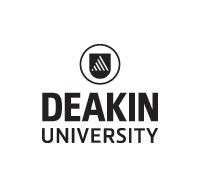AIH383 - Global Disasters
Unit details
| Year: | 2024 unit information |
|---|---|
| Enrolment modes: | Trimester 2: Burwood (Melbourne), Waurn Ponds (Geelong), Online |
| Credit point(s): | 1 |
| EFTSL value: | 0.125 |
| Unit Chair: | Trimester 2: Sarah Pinto |
| Cohort rule: | Nil |
| Prerequisite: | Nil |
| Corequisite: | Nil |
| Incompatible with: | Nil |
| Typical study commitment: | Students will on average spend 150-hours over the trimester undertaking the teaching, learning and assessment activities for this unit. This will include educator guided online learning activities within the unit site. |
| Educator-facilitated (scheduled) learning activities - on-campus unit enrolment: | 1 x 1-hour lecture per week, 1 x 1-hour seminar per week |
| Educator-facilitated (scheduled) learning activities - online unit enrolment: | 1 x 1-hour lecture per week (recordings provided), 1 x 1-hour online seminar per week |
Content
How can we understand and survive a more disastrous world? In the twenty-first century, disasters are becoming more common, more frequent and more dangerous all around the globe. This unit examines catastrophic events in the nineteenth, twentieth and twenty-first centuries to help us better understand disasters, and be more prepared for our future. We begin with the eruption of Krakatoa in the Sunda Strait in 1883, which is still one of the deadliest volcanic eruptions on record. Over the course of the trimester we investigate a series of disasters around the world, including the 1918 influenza pandemic, London's Great Smog of 1952, the Bhopal industrial disaster in India in 1984, Hurricane Katrina in the United States in 2005, and the Black Saturday bushfires in Victoria in 2009. Each disaster offers us a case study in the experiences, impacts, and long-term effects of catastrophic events. They demonstrate the way that disasters can make a society's divisions, inequalities and vulnerabilities both more visible and more pronounced. They also show that disasters can be disruptive in a range of other ways, including by prompting major social, political and cultural change. This unit concludes with an examination of the world's most recent disaster in global and local contexts: the COVID-19 pandemic in 2020.
| ULO | These are the Learning Outcomes (ULO) for this unit. At the completion of this unit, successful students can: | Deakin Graduate Learning Outcomes |
|---|---|---|
| ULO1 | Understand global disasters in historical and contemporary contexts. | GLO1: Discipline-specific knowledge and capabilities GLO8: Global Citizenship |
| ULO2 | Evaluate the causes, experiences, impacts and long-term effects of global disasters. | GLO1: Discipline-specific knowledge and capabilities GLO4: Critical thinking GLO8: Global Citizenship |
| ULO3 | Critically analyse understandings of vulnerability, risk and responsibility before, during and after a disaster. | GLO4: Critical thinking GLO8: Global Citizenship |
| ULO4 | Research and write a Ministerial Brief to provide advice on how catastrophic events in the past can inform current disaster response. | GLO2: Communication GLO3: Digital literacy GLO5: Problem Solving |
| ULO5 | Demonstrate the way that historical knowledge can be used to inform present and future action. | GLO1: Discipline-specific knowledge and capabilities GLO5: Problem Solving GLO8: Global Citizenship |
These Unit Learning Outcomes are applicable for all teaching periods throughout the year.
Assessment
| Assessment Description | Student output | Grading and weighting (% total mark for unit) | Indicative due week |
|---|---|---|---|
| Assessment 1: Seminar/Online Exercises | 1000 words or equivalent | 25% | Week 12 |
| Assessment 2: Report | 1000 words or equivalent | 25% | Week 6 |
| Assessment 3: Research and Writing Exercise | 2000 words or equivalent | 50% | Week 11 |
The assessment due weeks provided may change. The Unit Chair will clarify the exact assessment requirements, including the due date, at the start of the teaching period.
Learning Resource
The texts and reading list for the unit can be found on the University Library via AIH383
Note: Select the relevant trimester reading list. Please note that a future teaching period's reading list may not be available until a month prior to the start of that teaching period so you may wish to use the relevant trimester's prior year reading list as a guide only.
Unit Fee Information
Fees and charges vary depending on the type of fee place you hold, your course, your commencement year, the units you choose to study and their study discipline, and your study load.
Tuition fees increase at the beginning of each calendar year and all fees quoted are in Australian dollars ($AUD). Tuition fees do not include textbooks, computer equipment or software, other equipment or costs such as mandatory checks, travel and stationery.
Use the Fee estimator to see course and unit fees applicable to your course and type of place.
For further information regarding tuition fees, other fees and charges, invoice due dates, withdrawal dates, payment methods visit our Current Students website.
